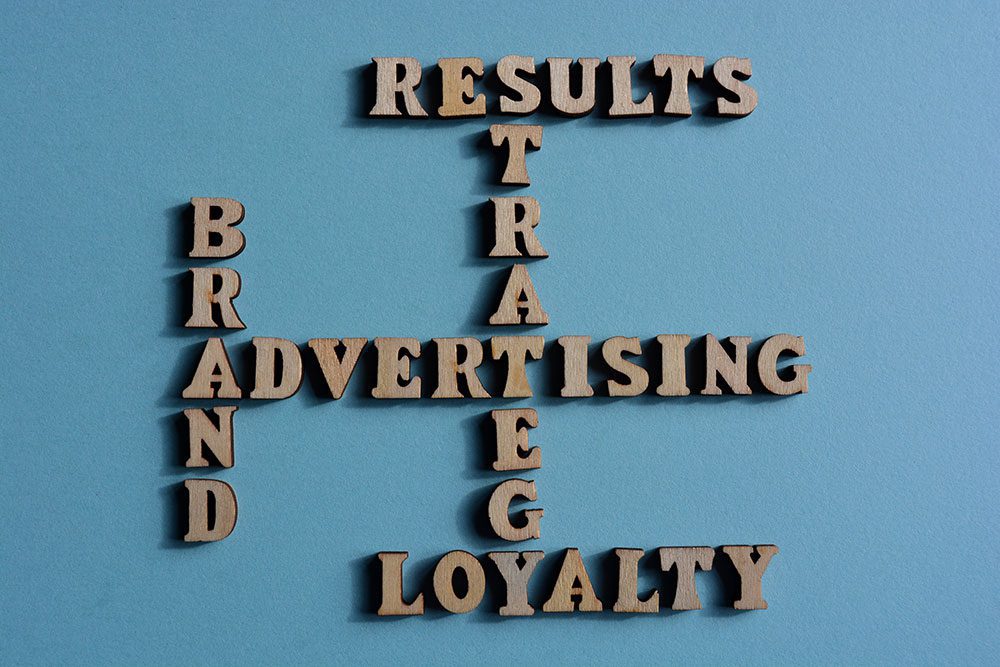9- Case Studies and Real-World Examples
The application of behavioral targeting in practical contexts best demonstrates its true worth, even though the theory behind it is persuasive on its own. The methods, resources, and inventiveness required to create effective data-driven marketing campaigns are better understood by looking at how real businesses—from tech behemoths to specialized sector participants—use behavioral insights. These case studies provide concrete proof of behavioral targeting’s efficacy by illuminating the ways in which it raises engagement, encourages conversions, improves customer experiences, and eventually aids in business expansion.
Applications of behavioral targeting in the real world demonstrate not only the creative methods used by brands, but also how diverse and flexible these tactics are across industries. These examples give a broad picture of the effects of behavioral targeting, whether it’s an e-commerce platform that makes real-time product recommendations, a streaming service that modifies its content offerings according to user preferences, or a travel app that encourages users to make reservations with exclusive offers.
This section will examine some of the most effective and significant behavioral insights-driven campaigns, along with industry-specific examples that show how this strategy can be tailored to suit particular business models and customer journeys. Marketers can learn useful lessons and find ideas for implementing similar strategies in their own companies by examining these examples, demonstrating that behavioral targeting is a tried-and-true and scalable marketing strategy.
Successful Campaigns- Brands Leveraging Behavioral Targeting Effectively
Through innovative and data-driven campaigns, a number of well-known international brands have set the standard for showcasing the observable advantages of behavioral targeting. Amazon, which is considered the industry leader in behavioral personalization, is one such example. Amazon provides individualized product recommendations that seem remarkably accurate by looking at a user’s past purchases, browsing history, product reviews, and even search patterns. The business has seen improvements in user satisfaction, conversion rates, and average order values thanks to this strategy. It is estimated that a significant amount of the company’s revenue is generated by their recommendation engine alone.
Another compelling example is Spotify, which creates personalized playlists like “Discover Weekly” and “Wrapped” based on user preferences and listening habits. Behavioral data that records listening patterns, song skips, playlist creation, and even the time of day users are active serves as the foundation for these features. The end effect is a highly customized music experience that boosts social sharing, app engagement, and user retention. Spotify has transformed user behavior into a product experience in and of itself, rather than merely a tool for targeting.

Another notable feature of Netflix is its use of behavioral targeting to suggest TV series and films based on user viewing habits, preferred genres, and even the length of time spent on a particular item. This real-time personalization keeps viewers coming back and greatly increases user satisfaction. Depending on their past viewing preferences, some users may see an action-packed image while others see a romantic scene from the same movie. Netflix’s dynamic thumbnails are even A/B tested based on individual behavioral traits.
Nike has also adopted behavioral targeting in its email marketing and mobile apps. Nike sends highly targeted emails with product recommendations or exclusive drops based on user interests by tracking what users browse on their website, what exercises they perform in the Nike Training Club app, and their previous purchases. This tactic fosters exclusivity and increases brand loyalty.
By providing value in the appropriate format, at the appropriate time, to the appropriate individual, these campaigns show that the careful use of behavioral data not only increases marketing efficacy but also improves the customer experience.
Industry-Specific Applications- How Industries Like E-commerce, Travel, and Entertainment Use Behavioral Targeting
Depending on the complexity of their offerings, the type of behavioral data they have access to, and the nature of their customer journey, various industries use behavioral targeting in different ways. Let’s examine some important industries where behavioral targeting has the potential to be especially revolutionary
E-Commerce
Given the abundance of behavioral data available—from clicks and wishlists to browsing patterns and abandoned carts—the e-commerce industry may directly benefit the most from behavioral targeting. Behavioral targeting is used by online retailers such as ASOS, Zappos, and Shopify-powered stores to provide personalized product recommendations, flash sales, and promotional emails to each individual customer. Dynamic retargeting advertisements increase conversion rates by following users around the web and displaying the exact products they viewed or similar options.
Real-time alerts based on user activity and inventory levels, like “Only 2 items left in stock” or “Someone just purchased this!” are also powered by behavioral triggers. Additionally, brands can target high-value customers with loyalty benefits and first-access promotions by segmenting their customer base based on factors like average order value or frequency of purchases.

Travel and Hospitality
By tailoring offers according to search activity, booking history, and seasonality, behavioral targeting aids the travel industry in turning interest into reservations. For instance, a user looking at flights to Rome might subsequently see advertisements for guided tours or hotel packages at a discount. For example, Airbnb sends customized emails with destination guides and carefully chosen collections based on user behavior, surfacing listings that fit the user’s preferences, such as beachfront properties or homes that allow pets.
Behavior-based urgency signals, such as countdown timers or limited availability alerts, are also used by travel websites like Expedia and Booking.com. These signals are triggered by behavioral data, such as the number of times a user has viewed a particular property. Here, behavioral targeting seeks to inspire and establish trust at every stage of the decision-making process in addition to selling.
Entertainment and Media
In the entertainment industry, behavioral targeting shapes everything from content recommendations to subscription offers. YouTube keeps users interested for longer by using their search and viewing history to recommend videos that are relevant to their interests. Similar to this, streaming services like Hulu and Disney+ use user preferences and behavior to curate homepages, make real-time content recommendations, and even display behaviorally-targeted advertisements within ad-supported plans.
Platforms for video games, like Steam and PlayStation Network, also tailor game suggestions according to peer activity, time spent on genres, and past purchases. Depending on how the player behaves while playing, they may offer in-game upgrades or ask users to pre-order a sequel to a game they have already played.

Finance and Fintech
Behavioral targeting is being used to customize user experiences even in traditionally conservative industries like finance. Banking apps monitor financial activity and spending patterns to provide personalized investment opportunities, credit card recommendations, and savings targets. By using behavioral triggers to alert users to market trends or personal milestones, fintech companies such as Robinhood and Revolut improve the responsiveness and intuitiveness of their platforms.
Healthcare and Wellness
Apps like MyFitnessPal and Headspace use behavioral data in the healthcare industry to provide fitness recommendations, content recommendations, and motivational reminders. To make sure that outreach initiatives are encouraging rather than invasive, these apps track usage patterns, objectives, and even behavior by time of day.
When taken as a whole, these case studies and business applications show that behavioral targeting is a competitive advantage rather than merely a marketing strategy. Companies can produce hyper-relevant experiences that feel natural, beneficial, and even enjoyable by learning to read and react to behavioral cues in real time. Behavioral targeting makes sure that marketing becomes less of an interruption and more of a service, whether it’s recommending a movie, a vacation package, or a product a user didn’t even know they needed.

10- Best Practices for Behavioral Targeting
A responsible and strategic approach is crucial as behavioral targeting continues to gain traction across industries. This type of marketing is fueled by increasingly sophisticated tools and technologies, and there is an unprecedented amount of behavioral data available. But this power also carries a significant responsibility: using data in ways that are not only efficient but also moral, open, and consistent with user expectations.
Delivering meaningful, timely, and personalized experiences that genuinely connect with users is the goal of behavioral targeting, not just increasing click-through rates or promoting sales. That is only possible if the targeting is done carefully, protecting personal information while making sure the content offered enhances the user’s experience.
The following best practices are crucial guidelines to make sure your behavioral targeting strategies are effective and steer clear of common pitfalls. These guidelines protect user confidence and long-term brand integrity while assisting marketers in maximizing impact.
Delivering meaningful, timely, and personalized experiences that genuinely connect with users is the goal of behavioral targeting, not just increasing click-through rates or promoting sales. That is only possible if the targeting is done carefully, protecting personal information while making sure the content offered enhances the user’s experience.
The following best practices are crucial guidelines to make sure your behavioral targeting strategies are effective and steer clear of common pitfalls. These guidelines protect user confidence and long-term brand integrity while assisting marketers in maximizing impact.
Transparency with Users- Disclosing Data Usage Policies Clearly and Accessibly
Transparency is now expected in today’s digital environment rather than optional. Consumers are becoming more conscious of the ways in which their behavioral and personal information is gathered and used, and any ambiguity can swiftly undermine confidence. Businesses must proactively reveal their data practices in an understandable and accessible manner in order to create and preserve transparency.
Data collection prompts, cookie consent notices, and privacy policies should all clearly explain how user data will be used rather than using technical legalese. A pop-up might say, for instance, “We use your browsing behavior to show you more relevant products and offers.” You can change your preferences at any time. This kind of wording empowers the consumer and communicates the brand’s dedication to moral behavior.
Additionally, companies should specify exactly what kinds of information are being gathered, including location, clicks, purchase history, and time spent on the website, as well as how this information contributes to the personalization of content. Allowing users to personalize their ad experience or opt out of behavioral tracking demonstrates the company’s respect for user autonomy and builds greater trust and respect.
Customers are more likely to interact with a brand when transparency is integrated into the user experience because they know that their data is being handled appropriately and in their best interests.

Using Data Ethically- Prioritizing User Trust and Legal Compliance
The idea of ethical data use goes beyond simple transparency and is closely related to consumer trust and long-term brand health. Organizations that use ethical behavioral targeting must take into account the psychological and emotional effects of their messaging and make sure that personalization improves the user experience without taking advantage of weaknesses.
It doesn’t follow that a business should use user data to draw in-depth behavioral insights. “Would the user expect this level of personalization?” is a crucial question that ethical marketers ask themselves. Would this seem intrusive? For example, unless there is explicit user consent and a clear benefit provided in exchange, targeting users based on extremely sensitive behaviors—like searches pertaining to personal health or mental well-being—should be done with extra caution or not at all.
Strict compliance with international data protection laws, such as the CCPA, GDPR, and other regional frameworks, is another requirement for the ethical use of data. These regulations mandate that companies not only gather data in an ethical manner but also store it safely, permit user consent and withdrawal, and guarantee openness when sharing data with third parties.
By putting ethics and compliance first, brands can create more enduring connections with consumers, lower the chance of negative feedback, and match marketing initiatives with wider social norms regarding digital integrity.
Segmenting Effectively- Tailoring Campaigns for Diverse, Behavior-Driven Audiences
The foundation of successful behavioral targeting is efficient segmentation. Segmentation enables marketers to divide users into discrete behavioral profiles, allowing for more timely and relevant communication, as opposed to treating your audience as a monolith.
Basic demographics should only be one aspect of segmentation. Cart abandoners, repeat buyers, high-engagement users, lapsed customers, and users who regularly engage with particular kinds of content are examples of behavioral segments. Marketers can precisely customize campaigns by examining data like visit frequency, preferred content categories, or purchase intervals.
The flexibility of behavioral segmentation is its main advantage. Behavioral segments, as opposed to static demographic groups, change in real time in response to fresh signals and behaviors. If a user, for instance, suddenly buys a treadmill after previously only perusing fitness equipment, they may be moved into a new market segment for health-conscious consumers, which could result in a new stream of tailored messages, advice, or accessory recommendations.
Additionally, brands can use machine learning models that predict future behaviors, like potential lifetime value or likelihood of churn, to create predictive segments. This enables marketers to be proactive instead of reactive, rewarding loyalty before it wanes or interacting with users before drop-off occurs.
Effective segmentation involves more than just personalization; it involves mass personalization that respects user behavior and provides genuine value at each step of the journey.

Regular Data Analysis- Continuously Refining Strategies with Actionable Insights
Behavioral targeting is a dynamic system that necessitates ongoing observation, evaluation, and modification; it is not a static approach. Frequent behavioral data analysis enables marketers to spot new trends, uncover hidden patterns that can spur innovation, and stay in step with changing user preferences.
Comprehensive insights into user paths, engagement metrics, and conversion funnels are offered by analytics platforms like Google Analytics, Adobe Analytics, Mixpanel, and Heap. With the help of these insights, marketers can respond to important queries: Which actions indicate a strong desire to buy? In the funnel, where are users dropping off? What kinds of content are generating the most interaction?
Analyzing targeting strategies’ long-term performance is equally crucial. Which behavioral segments show the highest responsiveness over time? Do campaigns need to be adjusted for seasonal changes in behavior? Are certain segments experiencing personalization fatigue? Marketing teams can improve strategies and maintain the relevance of campaigns by consistently posing and responding to these questions.
Analyzing behavioral data shouldn’t be done in isolation. To make sure that every touchpoint is in line with user expectations and current needs, the insights it produces should be incorporated into content planning, UX design, sales strategies, and customer support.
Testing and Optimization- A/B Testing Personalized Campaigns for Better Results
Testing improves even the most intelligent behavioral targeting approach. Marketers can compare variations of tailored messaging, visuals, timing, and delivery methods in a methodical and data-driven manner by using A/B testing, multivariate testing, and behavioral experimentation.
Testing becomes more sophisticated with behavioral targeting. You’re testing “which message works best for a specific segment exhibiting a specific behavior at a specific point in the funnel,” not just “which ad gets more clicks.” A retailer might, for example, send two different follow-up emails to customers who left their carts: one with an urgency message (“Only 1 item left in stock!”) and another with a savings message (“Here’s 10% off to complete your purchase”). The findings can guide not only that particular campaign but also more comprehensive messaging frameworks for related audiences.
Channel strategy can also be optimized through testing. Perhaps for some users, customized in-app messages perform better than emails, or for time-sensitive promotions, SMS encourages greater engagement than push notifications. Brands can more effectively allocate resources and improve the return on investment from their personalization efforts thanks to these channel-level insights.
Crucially, testing ought to be ongoing rather than sporadic. Over time, user preferences can shift, so what works today might not work tomorrow. Campaigns remain creative, flexible, and in line with audience behavior through continuous testing.
The art and science of behavioral targeting are combined. Although data and technology serve as the cornerstone, marketers’ application of these tools—with empathy, curiosity, and a profound regard for the user—is where the true magic happens. These best practices provide a road map for creating genuine, enduring relationships with clients who feel appreciated, seen, and understood—not just for better campaigns.
Brands can make sure that their behavioral targeting strategies are not only successful but also long-lasting, considerate, and prepared for the future by integrating transparency, ethical responsibility, astute segmentation, ongoing analysis, and careful testing.

11- Behavioral Targeting Trends
From its early days of basic website tracking and retargeting, behavioral targeting has advanced significantly. What was once thought of as a cutting-edge approach is now fundamental to digital marketing. The field of behavioral targeting is changing dramatically as regulatory environments tighten and consumer expectations rise. Marketers are being forced to innovate in order to remain relevant as well as to provide experiences that are user-friendly, considerate of privacy, and flexible in an ever-more complex digital ecosystem.
Fundamentally, behavioral targeting aims to comprehend user intent and react accordingly. However, the means by which that understanding can be attained are changing quickly. Technology has advanced rapidly in recent years, especially in the areas of automation, machine learning, and artificial intelligence. These fields are now essential for processing behavioral data and producing predictive insights. A redesign of data collection techniques has been spurred by the phaseout of third-party cookies, which has increased the significance of consent-based models and first-party data.
The consumer journey is also no longer linear. Regardless of the touchpoint, users expect smooth and consistent personalization as they frequently switch between devices, channels, and platforms. The need for behavioral targeting to function cohesively across websites, mobile apps, email, social media, and even offline interactions has led to the growth of omnichannel strategies. Instead of making the consumer follow the brand, marketers need to create experiences that follow the consumer.
At the same time, customers are now more conscious of—and wary of—how their data is used. Once heralded as a digital marketing marvel, real-time personalization now has to balance being helpful and invasive. In order to be successful, brands need to use tactics and tools that prioritize ethics, consent, and transparency while also providing contextual value.
This section examines the most important and rapidly evolving trends that are currently changing behavioral targeting. These trends, which range from omnichannel integration to hyper-personalized, real-time content delivery, and from the integration of AI into every aspect of the customer journey to new tracking techniques in a cookieless world, present both opportunities and challenges. They provide a guide for marketers who are prepared to change in order to provide more intelligent, considerate, and powerful experiences in the privacy-first digital era.

AI and Automation- Predictive and Prescriptive Analytics Take Center Stage
The next generation of behavioral targeting is powered by artificial intelligence (AI), which is no longer a sci-fi idea. AI allows marketers to advance beyond simple personalization into the domains of predictive and prescriptive analytics by processing enormous volumes of user data in real-time.
Using past behavioral data, predictive analytics forecasts future behavior. An AI model might identify, for instance, that users who regularly visit mid-tier pricing pages and read comparison blog posts are probably in the consideration stage of the funnel. After that, marketers can offer them free trials, comparison tools, or targeted product demos to help them make decisions more quickly. This feature enables brands to respond to user needs before they are expressly expressed, acting proactively as opposed to reactively.
Prescriptive analytics is even more sophisticated; it not only predicts probable behaviors but also recommends the most effective way to change them. AI may, for example, conclude that sending a particular kind of retention email within the next 48 hours has a 72% chance of keeping a user, in addition to determining that they are likely to churn. Hyper-targeted, optimized interventions that improve productivity and customer satisfaction are made possible by this level of intelligence.
By implementing these insights at scale—modifying content, delivery schedules, channel selection, and more with little human intervention—automation enhances artificial intelligence. Automation guarantees that the appropriate message reaches the right person at the right time, across thousands or even millions of users, whether it be through real-time chat responses, triggered email sequences, or personalized product recommendations.
Any brand that is serious about using behavioral targeting as a strategic pillar of growth, rather than just a tool, must have these tools as AI and automation continue to progress.
Cookieless Tracking- Adapting to Privacy-First Changes in Digital Marketing
The worldwide move away from third-party cookies is currently one of the most disruptive trends in behavioral targeting. Marketers now need to reconsider how they track behavior and personalize experiences without depending on cookie-based data, as major browsers like Safari and Firefox already block them by default, and Google Chrome is expected to follow suit.
First-party data, or the information consumers directly provide to a brand through their activities on owned platforms (such as websites, mobile apps, and email exchanges), is highly valued in this new era, which is frequently referred to as the “cookieless future.” In order to encourage users to voluntarily share their data in exchange for value, businesses are now investing in creating strong first-party data infrastructures, such as consent-based data collection, gated content strategies, loyalty programs, and preference centers.
Furthermore, technologies like identity resolution platforms, data clean rooms, and server-side tracking are proliferating. With the help of these tools, marketers can assemble behavioral insights in a way that respects user preferences and complies with privacy regulations while preserving some degree of personalization.
Another promising substitute for cookie-based behavioral targeting is contextual targeting. Contextual targeting provides relevance without requiring personal identifiers by placing advertisements based on the content a user is currently consuming rather than on their previous behavior.
Marketers who embrace innovation, transparency, and consent will be successful in this new environment, making behavioral targeting not only privacy-compliant but also trust-building.

Omnichannel Strategies- Ensuring Consistent Targeting Across All Touchpoints
Customers of today expect a seamless experience across all platforms, including websites, mobile apps, emails, social media, and in-store interactions. Because of this development, omnichannel marketing is now not only a recommended practice but also a requirement for behavioral targeting. Regardless of where they are in the journey, consumers now expect brands to remember their intent, preferences, and actions across all touchpoints.
Delivering consistent, pertinent messaging to users wherever they are, without fragmentation, is the goal of omnichannel behavioral targeting. For example, when a user adds a product to their cart on a desktop website, they should be notified the following day through a mobile app, and later in the week, they should see a retargeted Facebook ad. Every message builds upon the one before it, forming a seamless story that advances the user.
It is necessary to sync customer profiles into a single view and integrate behavioral data across platforms in order to reach this degree of coordination. These insights are brought together by technologies such as Customer Data Platforms (CDPs), which pull in real-time data from websites, mobile apps, CRM systems, and other sources to enable coordinated cross-channel experiences.
Additionally, better attribution modeling results from consistent behavioral targeting across channels, giving marketers a better understanding of which behaviors are driving conversions and where to make more strategic investments. Every touchpoint counts, and behavioral targeting needs to take the entire user journey into consideration. A user may click on an email, browse a product on their phone, and then make a desktop purchase.
In order to preserve brand identity and trust, omnichannel strategies are also essential. Users view a brand as attentive, professional, and trustworthy when personalization feels consistent across all platforms, which strengthens lifetime value and loyalty.
Real-Time Personalization- Engaging Users with Immediate, Context-Relevant Content
Real-time personalization, or the capacity to instantly customize experiences and content according to a user’s current behavior, context, and intent, is arguably the most exciting area of behavioral targeting. Modern users are expecting this level of immediacy more and more, particularly in industries like media, travel, and e-commerce.
Brands are able to provide dynamic, situationally aware content that adapts on the fly thanks to real-time personalization. An e-commerce website may change its homepage banner according to the user’s location or whether they are a repeat visitor, while a streaming service may highlight different shows depending on whether the user is browsing late at night (perhaps preferring thrillers or comfort TV).
Scroll depth, dwell time, navigation patterns, and even mouse movements are examples of live behavioral cues that can be used to modify the user’s experience in real time. This can include making product recommendations in the middle of a session, displaying urgency alerts (“Only 3 left!”), customizing chatbot responses, or changing layout components to suit user preferences.
Brands require front-end platforms that can dynamically modify content and robust back-end systems that facilitate low-latency data processing in order to enable real-time responsiveness. More brands than ever before are making this a reality thanks to the development of headless CMS platforms, sophisticated tagging techniques, and AI-powered personalization engines.
The end effect is a seamless, hyper-relevant digital experience that gives users a sense of being understood as individuals rather than just as members of a market.
When taken as a whole, these behavioral targeting trends are changing the definition of personalized marketing. One-size-fits-all advertising is giving way to data-driven, ethical, and intelligent personalization that is influenced by human values.
Brands that use automation and artificial intelligence will become more efficient and forward-thinking. The strategies of those who master cookieless tracking will be future-proof. Businesses that use omnichannel consistency will create smooth user experiences, and those that use real-time personalization will make users happy every time they click.
However, the need for balance—between automation and authenticity, scale and sensitivity, and personalization and privacy—may be the most significant factor tying all these trends together. As behavioral targeting becomes more sophisticated, the brands that succeed will be those that not only adopt these trends but also mold them with purpose, empathy, and inventiveness.

12- Ethical Considerations in Behavioral Targeting
The use of behavioral targeting technologies has more significant ethical ramifications as they grow in strength and accuracy. In many instances, what started out as a tool to enhance the customer experience has given rise to grave concerns regarding privacy, autonomy, justice, and even manipulation. Although data-driven personalization can improve digital experiences, if it is not used carefully, it can also invade users’ privacy, perpetuate social injustices, and undermine trust.
Ethical behavioral targeting is about doing the right thing for users, not just following the law. It calls on companies to rethink their tactics in light of values like accountability, transparency, inclusivity, and user empowerment. Marketing teams must make ethics a central component of their behavioral targeting campaigns in a world where consumers are becoming more conscious of how their data is being used and where regulatory scrutiny is growing.
This section examines the fundamental ethical aspects of behavioral targeting, emphasizing the significance of user consent, the necessity of refraining from exploitative or manipulative methods, and the increasing need for inclusive and diverse targeting models that represent the whole range of human identity and experience.
User Consent- Importance of Opt-Ins and Clear Communication
User consent is arguably the most fundamental ethical principle in behavioral targeting. When behavioral data is gathered and used without clear and informed consent, it crosses the boundary from personalization to surveillance. Users need to understand exactly how, why, and for what purposes their data will be used, in addition to the fact that it is being collected.
Consent is all too frequently hidden in long terms and conditions or displayed as a cookie banner box that has already been checked. Targeting ethical behavior necessitates embracing genuine transparency and going beyond these token gestures. This entails giving consumers succinct, straightforward, and jargon-free explanations of what information is gathered (like location, browsing history, or purchase patterns), how it improves their experience, and who can access it.
An ethical pillar is the opt-in model, which is mandated by the GDPR and other privacy regulations. It gives users more control over when and how they engage with data-sharing ecosystems. In order to strengthen trust and accountability, marketers should also provide simple opt-outs, preference management tools, and the option to remove one’s data.
Furthermore, ethical consent is a continuous process. It’s a continuous discussion. In addition to providing prompts to review or refresh their consent settings, brands should update their data policies and remind users of them on a regular basis. In addition to meeting legal requirements, doing this shows users that their privacy and autonomy are genuinely valued.

Avoiding Manipulative Practices- Maintaining Integrity in Targeting
Although the goal of behavioral targeting is to enhance user experience, when applied carelessly, it can easily cross the line into manipulation. Users may feel pressured, overloaded, or even duped by strategies like emotional targeting, urgency messaging (“Only one left!”), dark patterns (like deceptive calls to action), and persistent retargeting.
The user’s right to make free, informed decisions is respected by ethical behavioral targeting. This is not to say that marketers are incapable of persuasion; rather, it means that persuasion should be based on mutual benefit, relevance, and value rather than guilt, fear, or false information. A user may be gently reminded of a product they expressed interest in by a well-designed retargeting ad, but they shouldn’t feel like they are being watched or pursued nonstop online.
The ability to take advantage of weaknesses is one of the more pernicious features of manipulative targeting; for example, targeting people with specific mental health issues or financial insecurities with advertisements intended to elicit strong emotions. It is the ethical duty of marketers to be aware of these dangers and steer clear of strategies that take advantage of people’s feelings, urges, or vulnerabilities.
Creating campaigns that put long-term relationships ahead of short-term conversions is essential to upholding ethical integrity. Although trust-based marketing may take longer to produce results, it lays a foundation that is far more durable, particularly in a time when consumers are growing more astute and wary of intrusive advertising.

Inclusion and Diversity- Ensuring Targeting Does Not Perpetuate Biases
The potential for behavioral targeting to perpetuate prejudice and exclusion is a more subtle but no less significant ethical aspect. When algorithms are trained on past behavioral data, they may inadvertently reinforce discriminatory patterns or stereotypes, particularly if the data represents societal injustices.
For instance, because historical click data indicates that more men applied for executive positions, targeting algorithms may show job ads for those positions to men primarily. In a similar vein, users from higher-income zip codes may see credit card promotions more frequently, systematically excluding lower-income people who might still be eligible or interested. These tendencies are significant even though they aren’t always deliberate.
Brands must use ethical auditing techniques to assess the performance of their behavioral models across various demographics in order to counteract this. Analyzing the effects of campaigns on people based on their gender, race, age, ability, income, and location is part of this. Diverse representation should be integrated into the data collection, segmentation, and delivery phases of behavioral targeting, not merely a checkbox in creative assets.
Additionally, taking accessibility guidelines, language preferences, and cultural sensitivities into account is another aspect of behavioral targeting inclusion. A brand’s ethical compass can be demonstrated, for instance, by making sure advertisements are not only pertinent but also considerate of local values or by tailoring content for people with visual or cognitive impairments.
Targeting ethical behavior needs to be proactive rather than reactive. Building diverse data sets, testing campaigns across a range of demographics, and including diverse voices in strategy and execution are all necessary to achieve this. Only then will behavioral targeting be able to fulfill its promise of reaching the right people in a way that respects their uniqueness and dignity.
The potential for behavioral targeting to have an impact on people’s lives, both positively and negatively, is increasing along with its sophistication and reach. Ethical marketing must be a fundamental component of strategy, design, and execution; it cannot be an add-on feature to satisfy regulators or calm consciences. This goes beyond merely abiding by the law; it necessitates more in-depth inquiries: Are we honoring users’ preferences? Are we advocating for equity and inclusivity? Are we strengthening or weakening trust?
Brands that incorporate ethics into their DNA will dominate behavioral targeting in the future—not just because it’s the moral thing to do, but also because it’s what contemporary consumers want. The new currency is trust, and gaining it requires.

13- Conclusion
By giving brands the previously unheard-of capacity to comprehend and interact with customers on a profoundly personal level, behavioral targeting has completely changed the digital marketing scene. Marketers can precisely customize their messages and create experiences that are not only relevant but also genuinely intuitive by utilizing behavioral data, which includes everything from browsing patterns and search queries to purchase history and device usage. This degree of personalization is rapidly becoming the norm across industries and is no longer a luxury enjoyed only by tech behemoths.
The fundamental ideas of behavioral targeting have been examined in this article, along with the kinds of data that underpin it and the segmentation techniques that make it work. We’ve looked at the wide range of targeting strategies that help marketers reach their audiences where they are with messaging that reflects their current intent, including retargeting, contextual targeting, geo-targeting, and predictive analytics. Additionally, we have observed that behavioral targeting is used in all phases of the sales funnel and across a wide range of channels, including e-commerce, email, social media, and websites.
Although behavioral targeting has many advantages, such as increased conversion rates, better user experiences, more effective use of marketing funds, and increased customer loyalty, there are drawbacks as well. Brands must approach this practice with caution, intentionality, and respect for the consumer due to privacy concerns, data accuracy, the dangers of overpersonalization, and the pressure of regulatory compliance.
The effectiveness of behavioral targeting depends on how creatively and responsibly a brand uses its data, not how much information it can gather. Marketers must adjust with equal parts agility and ethics as new tools, technologies, and trends continue to shape the industry, especially AI, real-time personalization, omnichannel targeting, and cookieless tracking.
Furthermore, it is impossible to ignore the growth of ethical marketing. Consumers of today are knowledgeable, active participants in the digital economy rather than merely passive consumers of advertisements. They value inclusion, demand consent, and anticipate transparency. In addition to low engagement, brands that fall short of these standards run the risk of losing consumers’ trust, which is the most valuable asset in today’s economy.
Essentially, behavioral targeting is a strategic philosophy based on data, empathy, and meaningful interaction rather than merely a marketing tactic. When done well, it allows brands to anticipate and meet the needs of their customers, providing value at every touchpoint while respecting each user’s privacy and individuality.
Behavioral targeting will keep changing as we enter the era of personalization. Creating marketing experiences that serve rather than just sell—connecting people to the right message, at the right time, in the right way—will continue to be its primary goal.
Continue Reading
- Behavioral Targeting- How to Customize Your Marketing Efforts / Part 1
- Behavioral Targeting- How to Customize Your Marketing Efforts / Part 2
- Behavioral Targeting- How to Customize Your Marketing Efforts / Part 3
- Behavioral Targeting- How to Customize Your Marketing Efforts / Part 4
Written By: Anshul Jharia

